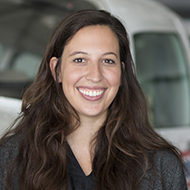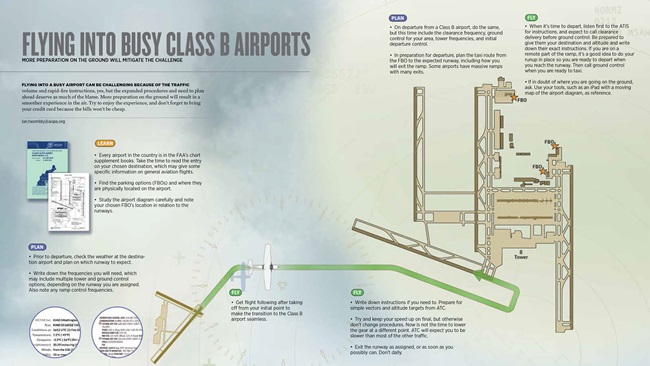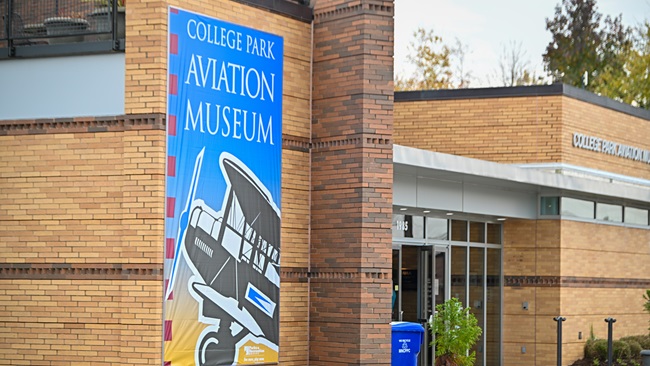Float on
Seaplane flying on Lake Tahoe










The town and nearby Lake Tahoe are known for its skiing, hiking, watersports and blue water, and also as film locations for Top Gun: Maverick and The Godfather Part II. And now, thanks to Fly Truckee Tahoe, it’s known for float flying.
Destination float ratings have long been a trend in aviation with Florida, Minnesota, Maine, and Alaska getting the bulk of that business, but if you’re looking for a different type of challenge, California might be the place for you to add single-engine sea to your ticket. The mile-high Truckee-Tahoe Airport (TRK) is home to an array of backcountry-ready taildraggers and big-iron turboprops and jets, but Fly Truckee Tahoe is its sole commercial float operator. With approximately two-thirds of its shoreline in California and the other third in Nevada, Tahoe is a year-round destination for adventurers and leisure travelers of all types. And it’s a stunning and unique place to learn to fly floats, an experience that should be on every aviator’s bucket list.
Kevin Sloane, the founder of Fly Truckee Tahoe, has been hooked on aviation since he and a friend took discovery flights together about 35 years ago.
“We both liked it, we both got competitive with each other, and I think I won the race,” he says. “I just kept on going through ratings and whatnot and it just set me up for where I am today.”
Since then, he’s built thousands of hours and varied experience, mostly instructing, but also flying for a skydive operation and for Cape Air on the East Coast and Caribbean. The past eight years have “really been consumed by the floatplane flying.”
In an average year, Fly Truckee Tahoe completes about 60 float ratings, with Sloane as the lone seaplane CFI (sea-FI?). It has been, he says, “a lot busier than we ever thought it could ever be.” In addition to float ratings, the school offers tailwheel endorsements, floatplane rides, and standard Part 61 instruction. While most of the float ratings take place in the summer, Fly Truckee Tahoe is open year-round. Even when the air temperature drops, the 1,600-foot-plus deep lake never totally freezes. “The winter is really just an incredibly beautiful time to fly. Shorter days result in a little less flying time, though. It’s a VFR product.”
The primarily clear weather of Truckee means that most days are float days. Floats, whose control surfaces and wings turn into sails on the water, are subject to lower wind limits than other airplanes, especially during initial training. Sloane schedules most, if not all, flights in the calm of early morning, which today begins with thick valley fog straight out of a Stephen King novella. Sloane promises it will burn off quickly during the drive onto the field and down to the last hangar row where he keeps his fleet.
Sloane has a couple executive hangars filled with airplanes he uses for work and airplanes of friends and clients. He keeps his two seaplanes—one CubCrafters Top Cub, which he uses for dual instruction, and one Backcountry Super Cub Mackey SQ2, which he thinks of as his personal floatplane—on amphibious floats. Both are noticeably, intentionally spotless.
“Our clientele’s a special clientele and we like to make sure our equipment does match that,” says Sloane. “A happy client is going to bring us another happy client.” Included in that special clientele are Taylor Swift and Mark Zuckerberg, who have both been on floatplane rides with Sloane.
Sloane maneuvers the towering Top Cub out of the hangar in preparation for today’s flight easily and by hand. Climbing into a Cub takes a certain amount of flexibility even on the ground, and adding the float plus a life jacket into that equation means it is almost impossible to get into the airplane smoothly. Once seated, it feels too upright—aren’t you supposed to lean back in a Cub?—but the incredible forward visibility makes up for it.
An hour or so later, the fog has finally burned off enough for a special VFR departure to the southeast. Taking off from Truckee, the pendulum-low center of gravity Cub feels sluggish, aloft against the odds. Cubs are already known for their lack of haste, but with the drag of floats, the groundspeed is almost comical. Not getting anywhere fast, that slowness forces the pilot to focus on the environment, the feel of the controls, and the beauty around them.
Instead of the flat scenery where many other operators are based, Truckee has all the complexity of float flying plus the challenge of mountain flying. This unique operating environment, Sloane says, is what sets Fly Truckee Tahoe apart. From his perspective, learning in an environment like this teaches more than just float skills and gives the student more bang for their buck, and he’s understandably proud he has the tools to do it. Few floatplanes could cope with the density altitude as well as the Top Cub which is already over 7,000 feet at departure. This also means the lake is relatively quiet, and he doesn’t have to compete with other float operators for the prime spots. Beyond environmental considerations, there’s much to learn with stick and rudder skills as well.
“It’s like tailwheel,” says Sloane. “And it just gives you a different perspective. It also can be a little bit overwhelming at times because most pilots are used to a very standard pattern or a very standard approach, and when you’re out on the water you really don’t have that. You have a lot of options and sometimes a lot of options can get confusing.”
Hopping over a saddle in the mountains, the grandeur of Lake Tahoe fills the windscreen. It looks oceanic, the whispers of wind on this otherwise calm morning lightly texturing the water. After record snowfall, the peaks are still whitecapped, a dissonant juxtaposition to the short-sleeved boaters and swimmers already enjoying the lake.
“Look at the color,” says Sloane, as the Cub crosses the shoreline of the lake. “Wait till the sun shines on it.” Beside the impressive size, it’s Tahoe’s deep blue more than anything that evokes the sea. And with a little sunlight, the deep blue turns green around the edges, clear water revealing the iconic rounded boulders and little islands of the lake. Taking the full tour low above the lake leads by winding roads, more crystal-clear water, and from a distance, the jewel of Emerald Bay’s waterfall before returning to the northernmost shoreline. He configures for a landing, the amphib’s gear lights indicating three blue and singing “gear is up for water landing.”
The floats gently touch down, but even with that gentleness the feeling is more jarring than landing on pavement without the flex of traditional gear. As the airplane settles, levels, and legally becomes beholden to the Coast Guard’s rules, Sloane lowers the water rudders and with the lowest power setting and now sail-like ailerons, maneuvers the seaplane on the water. The most different part of floatplane flying is operating on the water and effectively having no brakes. Avoiding iceberg-esque underwater hazards, anticipating the depth of the water around you, the wild card of fellow boaters, wakes and swell, turns one of the simpler parts of land flying into arguably the most complex part of float flying.
But Sloane is a pro, completely at ease and in control of the situation in this dynamic environment. Bringing the power back to idle and occasionally clearing the engine, he maneuvers on a dime, hugging the lake shore and opening the door. He knows these waters, he says, but he wouldn’t feel this comfortable in any old place. As he taxis on the water, nearly everyone from the shore waves. The sunny floatplane is naturally striking against the forest backdrop, and Sloane mentions that he’s received several texts from friends and even a photo of the airplane just from this short flight.
Most of Tahoe’s shoreline is rocky, but Sloane has a sandy beach in mind for a short break. He deftly maneuvers between buoys and boats, and beaches the Cub with grace, shutting the engine down yards from shore, the only sound becoming the coarse sand parting for the floats as it glides forward. After a break sitting on the floats with toes in the water, it’s time to go. The sun is still high overhead but soon this magical carriage will turn into a pumpkin. Winds are scheduled to pick up, and floatplanes prefer winds, especially on a large open lake, that are in the single digits.
The departure is significantly longer than on land since the aircraft must overcome much more drag to be free of the water’s surface and contend with the mountainous elevation, but hopping back to Truckee is a breeze even though the climb is more sluggish as the DA has increased in the few hours and few degrees since this morning.
Landing on pavement with amphibs feels like walking in rental ski boots, all grace from the water gone as the Cub lumbers down the taxiway and back home to the hangar. And good thing too, as within an hour, those mountains have made some strong convection with lightning striking the field.
Sloane is a pilot’s pilot, and even after an early wake-up call and a long day of flying he’s seemingly unfatigued and talking about his next flight before the hangar door’s shut. He’s busy this week, with two students coming to town for their ratings.
There’s potential and demand to grow the operation, but for now, Fly Truckee Tahoe will keep its current pace. “Well, it’s a small, boutique business,” he says. “And it’s a very difficult environment from an insurance perspective…so I think for now we’re going to keep it organic and small.” The other benefit of keeping it the size it is now is that it allows him the freedom to spend more time with his family.
“I like to be really a one-person company that when I want to go on vacation or spend time with my family, I can flip the closed sign on the office door and go for that vacation.”
“I didn’t plan on float plane component to take off the way it did, but now it’s a bit of a tiger by the tail,” he says. “It’s been fun.” While this isn’t what he expected, he has no regrets and he’s grateful for the journey so far. And he loves that he has a one-of-a-kind operation. With a higher price point and a unique location, Sloane knows this isn’t the average SES experience; but as the lone operator in the area, he can charge what he wants and stay booked year round. Beyond teaching you to be a better pilot and adding a few new letters to your certificate, Sloane says float flying is not only a good time, it is the best time, especially in the Sierra Nevada on an alpine lake.
“Hands down. A dirt bike with wings that I can land on the water? There’s really nothing more fun.”



